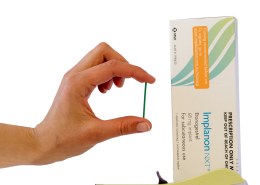I’m 14 weeks pregnant (baby boy) and i have zero appetite. almost everything sounds unappealing and the act of eating feels like a chore. I thought I will show a bigger bump by now but I’m barely visible! I just ...
Thank you, Gerald, for sharing your experience with tinnitus, commonly known as ringing in the ear. Tinnitus is quite common and typically isn't a sign of a serious health issue. However, if it worsens or becomes chronic (lasting more than three months), it can significantly impact your mood and sleRead more
Thank you, Gerald, for sharing your experience with tinnitus, commonly known as ringing in the ear.
Tinnitus is quite common and typically isn’t a sign of a serious health issue. However, if it worsens or becomes chronic (lasting more than three months), it can significantly impact your mood and sleep.
If your tinnitus persists or interferes with your daily life and sleep, it’s crucial to have it evaluated by an ENT specialist. Tinnitus can stem from various causes, including:
- Exposure to loud noise
- Age-related hearing loss
- Ear injuries or infections
- Medication side effects
- Tumors like acoustic neuroma
An ENT specialist will conduct a comprehensive evaluation to pinpoint the exact cause of your tinnitus and rule out any serious conditions. This evaluation may include a physical examination, hearing tests, and imaging scans.
Once the cause is identified, your ENT doctor can recommend the most suitable treatment plan, which may include:
- Sound therapy to mask the tinnitus
- Medications to manage related conditions or underlying infections
- Hearing aids if there’s associated hearing loss
- Lifestyle changes such as stress reduction and avoiding loud noises
I would encourage you to schedule an appointment with an ENT specialist for a thorough assessment and to discuss the next steps for managing your tinnitus. If you have any questions, please don’t hesitate to reach out.
Dr Valerie Tay
Senior Consultant Ear, Nose and Throat (ENT) Surgeon
https://www.aspire-ent.sg/
https://www.instagram.com/drvalerietay/
The information provided on this forum is for educational purposes only and not intended as medical advice. Please consult a healthcare provider for any medical concerns, diagnosis or treatment.
See less


It’s understandable to be worried about your appetite and weight during pregnancy, especially with the well-being of your baby in mind. Here's some guidance to help you navigate this: Appetite Loss During Pregnancy: It’s not uncommon to experience appetite changes, especially during the first trimesRead more
It’s understandable to be worried about your appetite and weight during pregnancy, especially with the well-being of your baby in mind. Here’s some guidance to help you navigate this:
Please reach out to your healthcare provider as soon as possible to discuss your concerns in more detail. They can help you develop a plan to manage your appetite and weight throughout your pregnancy. You’re doing a great job looking out for your baby, and your care team will support you every step of the way.
https://www.helf.co/en
All responses provided by HELF are generated by its AI architecture. The information shared is intended for general informational purposes only and should not be relied upon for medical diagnosis or treatment. Please consult a healthcare provider for any medical concerns, diagnosis or treatment.
See less